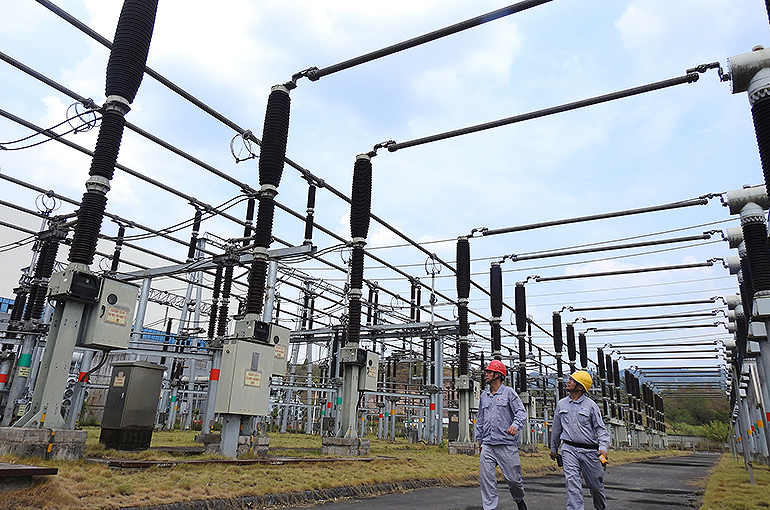 China’s Electricity Use Outpaced GDP Growth Again in 2024
China’s Electricity Use Outpaced GDP Growth Again in 2024(Yicai) Jan. 22 -- China’s electricity consumption went on expanding at a faster pace than the country’s gross domestic product last year, with experts offering three main reasons for that.
Electricity use in China increased 6.8 percent in 2024, according to the latest data from the National Energy Administration. GDP rose 5 percent, meeting the government’s annual target.
The trend began in 2021, when power consumption jumped 10.3 percent from the previous year, while the economy expanded 8.1 percent.
This phenomenon is partly due to the continuous increase in electrification across industries such as construction and transportation, significantly boosting energy demand and use, Lin Weibin, energy policy research director at the China Energy Research Society, told Yicai.
For example, replacing fuel cars with new energy vehicles is one of the key reasons for the rapid uptick in electricity consumption. The number of newly registered NEVs soared to 11.25 million last year from 1.2 million in 2019, per the Ministry of Public Security. As of Dec. 31, there were 31.4 million electric cars ion the roads, accounting for 8.9 percent of the total.
As a share of total energy consumption, electricity accounted for 28.1 percent in 2023, up from 25.5 percent in 2020, with the figure expected to reach 35 percent by 2030, according to the China Electricity Council.
Another reason why electricity consumption is outpacing GDP growth is the rise of high-energy-using emerging industries, including fifth-generation networking, cloud computing, and artificial intelligence, Lin noted, adding that this may become the new norm in coming years.
Traditional Users
Meanwhile, the combined electricity consumption of the four traditional high-energy-using industries -- ferrous metal smelting and processing, non-ferrous metal smelting and processing, non-metallic mineral products, and chemical raw materials and products -- rose only 2.2 percent last year, down from 5.3 percent in 2023.
Electricity consumption in the ferrous metal smelting and processing and non-metallic mineral products industries actually fell 1 percent and 2.4 percent, respectively, while that of the non-ferrous metal smelting and processing plants rose 4.3 percent.
The chemical raw materials and products industry was the only one of the four sectors where power rose faster than the national GDP growth rate or 6.5 percent.
The impact on electricity consumption of changes in China’s industrial structure also played a role. Secondary industry is the main consumer, using 1,400 kilowatt-hours per CNY10,000 (USD375) of output value, said Wu Hongliang, a senior technical expert at China Southern Power Grid. That is about five times the consumption of tertiary industry, which is 300 kWh per CNY10,000 of output value, Wu added.
Tertiary industry’s share of China’s total economy surpassed that of secondary industry for the first time in 2016, and has remained the same since then, Wu said. But secondary industry’s share rebounded last year, contributing to the increase in electricity use, he noted.
Secondary industry accounted for half of the growth in China’s electricity use last year, surpassing the impact of changes in consumption by primary and tertiary industries as well as households, according to data provided by the CEC to Yicai.
Editors: Tang Shihua, Futura Costaglione